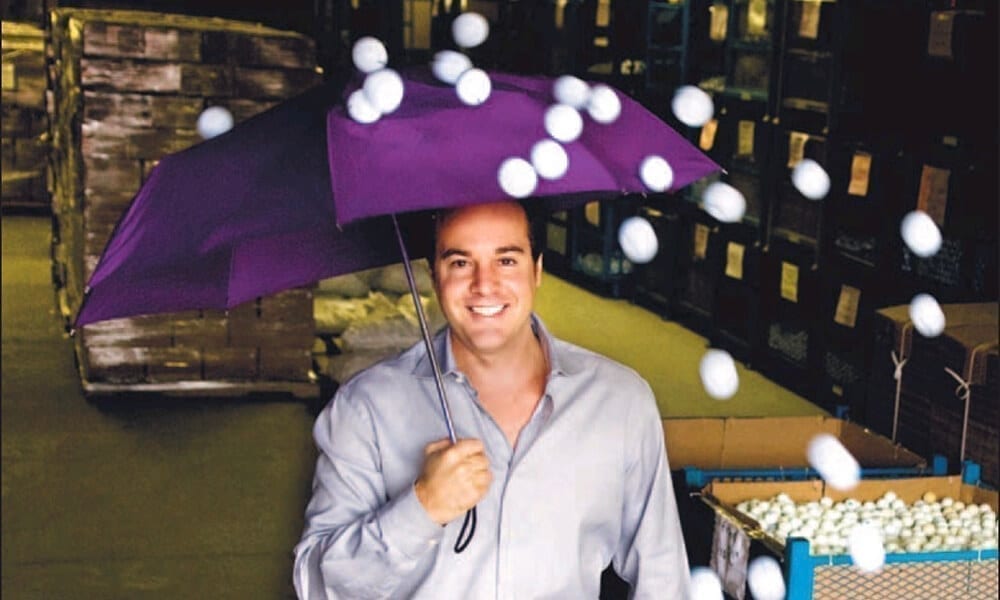Golf balls just might be the ultimate consumable in the sports world, with hundreds of millions lost every year—many after a single swing.
Consider that over 500 million rounds were played in the U.S. alone in 2020, with the coronavirus bringing even more newcomers and rusty former players into the fold. It’s probably safe to guesstimate that at least one ball goes wayward for every round played, with the frugality of the better and straighter-hitting players offset by those who can lose a dozen by the 19th hole. What other sporting good is lost with greater frequency?

“Golf balls are the drug that feeds the golf addiction so many are hooked on,” says Shaun Shienfield, the President of Foundgolfballs.com, which recovers, processes, and resells millions of balls to golfers every year across North America.
Shienfield estimates that companies like his and others in the market recycle and sell over 100 million balls a year. That figure doesn’t account for those balls that golfers find themselves and reuse. This is likely the lion’s share, too—who among us hasn’t put into play a ball they found on the course? It also doesn’t factor in those chewed and spit out by course mowers, those hit into adjacent properties and resold by industrious kids, or the bounty of balls that are never found.
Foundgolfballs has contracts with a host of golf courses in the U.S., predominantly in the southwest given its rich course supply and year-round play. Since today’s golf balls are impervious to water (unlike the Balata balls of the past), the bulk of their haul comes from water hazards. Shienfield, who’s Canadian and also has a successful arm of his business north of the U.S. border, estimates that 99 percent of balls his company finds have value. After collection, they’re cleaned, graded like eggs, and sorted by brand and by type (Titleist Pro-V, AVX, Velocity, etc.). For those who play a specific model (say a Callaway Chrome Soft yellow ball), they can buy the item in four different grades, with pricing based on quality.
There are a host of other players in the field, most notably PG Golf, which was acquired by Titleist parent company Acushnet in 2018. The world’s largest recycled golf ball company, PG Golf retrieves and markets golf balls to retailers and golf shops as well as directly to the consumer via LostGolfBalls.com. Among the many U.S. courses it collects balls from are Spyglass Hill, Innisbrook Resort, Victoria National, Hazeltine National, and Medinah Country Club.
PG Golf, your local source for pre-owned golf balls – https://t.co/kuhSF6wbB5 pic.twitter.com/ITmaLsWC0r
— PG Golf LLC (@PGprofessionalg) July 30, 2020
“It’s been a very interesting year. Because of the increased play, there was a commensurate increase in demand for golf balls,” Shienfield says. “Many of the traditional sporting goods retailers were closed so people were driven to buy their balls on the internet and that is where we derive the bulk of our business. This has changed consumer buying patterns and has jumped our sales projections three to four years ahead.”
After the 2020 season drew to a close, I actually did my own golf ball search, ultimately collecting almost 2,000 over several visits while my local course was closed. What’s interesting is that the sample size I gathered somewhat mirrored the industry overall, with more than 1/3 of the balls I retrieved being Titleists of some sort. Almost 19 percent were Callaway, followed somewhat distantly by TaylorMade, Bridgestone, TopFlite, and Srixon. I found 39 brands in total, with outliers ranging from AuthoriTee to Zero Friction. Two were non-branded, including one that only had a couple’s wedding date, making me wonder if it hadn’t been hit into a brush-filled waste area by an infrequent golfer who joined his fellow groomsmen for a day on the links. Oh, and I also recovered two of my own golf balls that I’d hit errantly some months earlier, as the markings were a clear giveaway.
But the exercise gave me a whole new appreciation for the lost, or found, golf ball business.
“Some golfers say they would never play with a used or recycled ball. To those golfers we ask, ‘Do you put a new ball down on the course every shot?’ After all, once a ball is hit once it’s now a used golf ball,” Shienfield says, before adding with a chuckle, “If they still insist that used golf balls are not for them, we send them a thank you note as being one of our suppliers.”

Would you play with a recycled golf ball? Tell us why or why not in the comments section.






